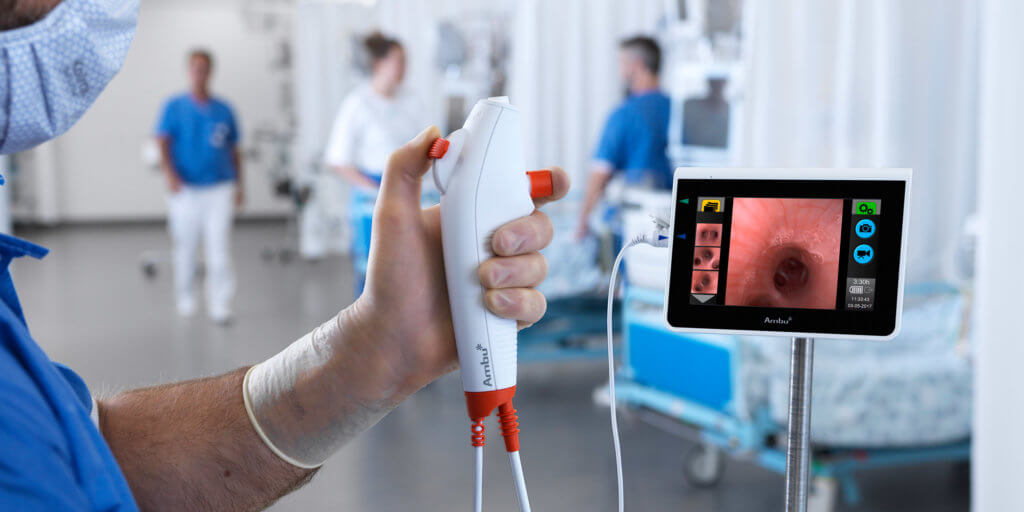
Protecting critically ill patients from exposure to infection has always been a top priority in the ICU.
While single-use medical endoscopes may offer a sterile, ready-to-use option to address cross-contamination concerns, little research has been done to assess the performance of disposable devices compared with their reusable counterparts.
In a new study from Trends in Anaesthesia and Critical Care, physicians were asked to rate several performance indicators for a single-use flexible bronchoscope including:
During the five-month study, participating physicians at eight hospitals in Sweden, Denmark, Germany and the United Kingdom, assessed the performance of the Ambu aScope 4 Broncho single-use bronchoscope compared with the endoscopes they traditionally use. Ambu provided 180 aScope 4 Broncho single-use bronchoscopes and nine Ambu aView monitors for use during the study.
The study was conducted by Marc Kriege, Jan Dalberg, Brendan A. McGrath, Alexander Shimabukuru-Vornhagen, Bjorn Billgren, Thomas Kromann Lund, Klaus Thornberg, Alice Vangerschov Christophersen, and Mark J.G. Dunn and the authors disclosed they have no financial or consulting arrangements Ambu.
The authors collected 150 bronchoscopy evaluations from physicians – 46 compared the aScope 4 Broncho to an earlier model of the disposable device, and 104 evaluations compared the aScope 4 Broncho to a reusable instrument. An additional 26 evaluations were collected following intubation, with five of those comparing the aScope 4 Broncho to the earlier model of Ambu’s disposable device.
There were two instances during the five-month study in which a physician was forced to abandon the disposable scope for a reusable one. The reasons given were “insufficient illumination during percutaneous dilatational tracheostomy” and a “defective aScope 4 video chip during awake endoscopic intubation.”
Overall, the authors calculated a 58 percent preference for the aScope 4 Broncho during bronchoscopy and a 65 percent preference in intubation cases, based on the evaluation responses.
In 87 percent of evaluations completed, physicians rated the advancing of the bronchoscope as “easy” or “very easy.” In 83 percent of evaluations, maneuvering the single-use bronchoscope through the bronchial tree was rated “easy” or “very easy.”
Physicians reported the aScope 4 Broncho could ultimately replace the flexible bronchoscopes they were currently using to perform these procedures.
“For both intubation and bronchoscopy, the preference for the aScope 4 Broncho was significantly higher than the preference for the customary endoscope,” the authors concluded.
Two noted limitations of this data-gathering method is that it relies on a physician’s memory and includes a physician’s inherent perspective or bias, the authors note. In addition, the number of bronchoscopies performed with and without the single-use scopes was not standardized for each participant throughout the course of the study.
When it comes to a cost analysis, previous studies have shown that single-use flexible endoscopes can be more cost-effective than customary reusable endoscopes because single-use devices do not require regular maintenance, repair or cleaning.
In addition to the costs associated with upkeep of reusable endoscopes, a recent analysis by a United Kingdom hospital found that single-use bronchoscopes also significantly reduce any cost associated with device-related infection.
Before infection risk was even factored in the cost, the study, from September 2019, calculated average cost per procedure with a single-use bronchoscope to be 12 percent less. Upon factoring in potential costs for treating an infection, the cost savings could reach as high as 57 percent, according to the study.


